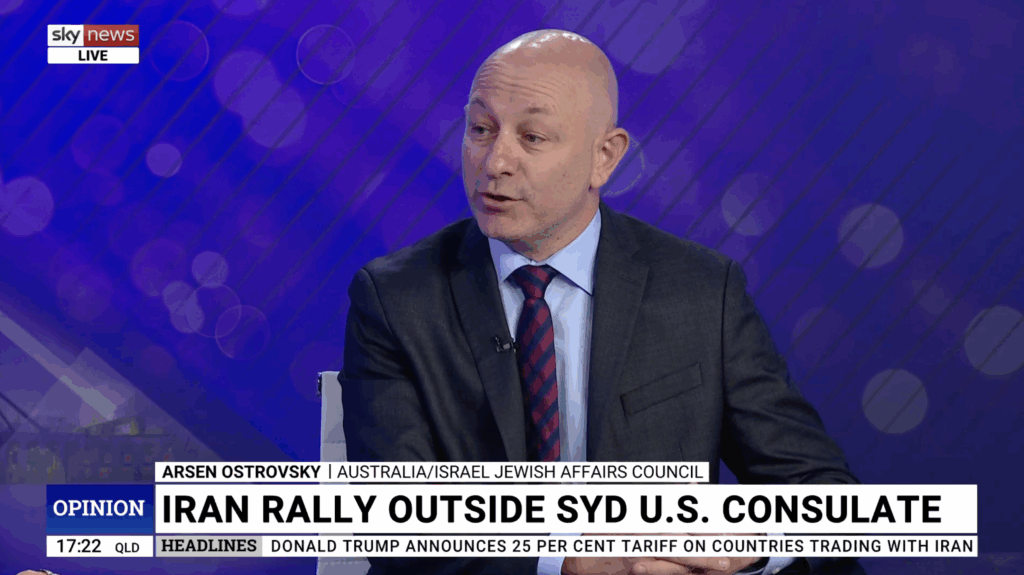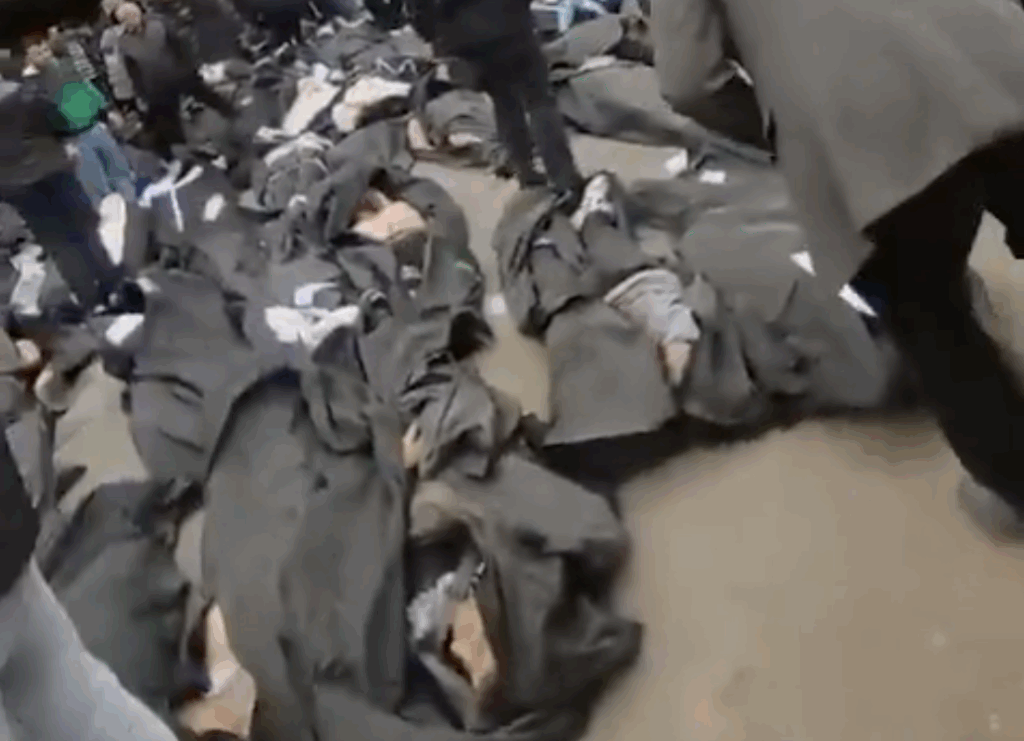UPDATES
Film Review: Last Dance
August 6, 2012 | Daniel Meyerowitz-Katz

Last Dance director David Pulbrook was obviously cognisant that a movie about the Israeli/Palestinian conflict would necessitate negotiating a moral and political minefield. Tellingly, he stressed in numerous interviews that “we were careful not to take sides and worked closely with Palestinian and Jewish communities to ensure a balanced point of view”.
He also went to some length to downplay the political significance of the film, telling the Australian Jewish News‘ Danny Gocs that “[t]he film is more about humanity and motherly love than the politically volatile issue between Israelis and Palestinians.”
His efforts to engage with the Jewish and Muslim communities in Australia are laudable, as were his attempts to create a human drama from an inhuman conflict. His characterisation, however, missed the mark.
Set in Melbourne, the Last Dance opens with bearded Jewish men in black suits and hats speaking to each other in Hebrew in front of a Jerusalem-esque backdrop of green trams and Hebrew writing. After several other depictions of the multicultural flavour of a heavily Jewish area of Melbourne, the camera focuses on elderly Ulah Lippman (Julia Blake) doing her pre-sabbath shopping.
As Mrs Lippman is ordering a slice of chocolate cake in the midst of the Friday afternoon rush at the iconic Glicks’ kosher bakery, the mobile phones of every customer in the store suddenly begin to ring at once. As would-be patrons and staff hurry out of the door, Mrs Lippman is left alone, seemingly baffled by what has taken place.
The mystery is resolved as soon as she reaches her home, when a young, hooded Arab man, Sadiq Mohammad (Firass Dirani), jumps out from behind her and forces his way into her apartment, before tying her to a chair.
As Sadiq enters the living room, he sees a menorah and other Jewish paraphernalia on display. He reacts violently, throwing them to the floor and remarking accusatively, “You are a Jew!” before leaning in close to the elderly woman, putting his knife to her throat and informing her that he would be happy to “rid the world of one more Jew”. Meanwhile, the camera focuses closely on the telltale numbers tattooed onto the Holocaust survivor’s arm.
It soon transpires that Sadiq is a failed suicide bomber and had watched his partner detonate himself inside a Melbourne synagogue. However, Sadiq could not stomach going through with the attack himself and had turned and fled for safety after being wounded by his partner’s shrapnel. Hiding out in his captive’s apartment, he begins to undergo a remarkable (and somewhat unbelievable) transformation from the hate-fuelled would-be terrorist in the opening scene to a rather clean-cut, upstanding and decent young man.
As they spend time together, hostage and captor connect on a human level. It is at this point that the movie becomes problematic, as the stories of the two are made to appear analogous. Mrs Lippman had been born in Germany and had lost her entire family, except her fiancée, in the Holocaust. Sadiq, meanwhile, had lost his family when Israeli tanks returned the fire of men who had been shooting from the roof of his family’s home.
The issues become apparent when the pair discuss Mrs Lippman’s son Ari, who had been an IDF soldier. “Is he any different from me?” Sadiq asks. Mrs Lippman at first responds with, “Yes! He was a soldier! You are a terrorist!” However, when Sadiq asks her whether she would have killed the Nazis if she had the chance, she falls speechless. This morally offensive implied equivalency misrepresents the historical reality of the subject matter, yet it is central to the film’s narrative.
This is accentuated when Pulbrook draws a parallel between Jewish Germans being rounded-up and sent to concentration camps based solely on their ethnicity and Israeli soldiers firing back at people who had been firing at them. The situations are far from morally equivalent, yet the movie evinces more sympathy for the latter than the former – concentrating on the loss of Sadiq’s five-year-old sister and not on any individual innocent victim from Mrs Lippman’s family.
At one stage, Sadiq’s justifies his actions, saying “you people are killing my people every day in Palestine! Innocent people!” without being contradicted, as though accidental deaths in the midst of a war justified murdering Jews in Melbourne.
Sadiq shows regret for his failure to go through with a plan to kill innocent Jews in Australia and esteem for his accomplice who had successfully done so. As noted in one phone call from her daughter, Mrs Lippman probably knew some of the victims, although the victims of the attack are never given any human identity.
In spite of this, Mrs Lippman begins to show a great deal of affection for the would-be terrorist – treating his wounds, feeding him and beginning to protect him from a police manhunt. This apparent manifestation of “Stockholm Syndrome”, however, is downplayed. Rather, the movie focuses on Sadiq undergoing a miraculous transformation in which he establishes a pseudo mother-son relationship with his hostage and thereby becomes an object of sympathy for the audience. By the end of the movie, we are supposed to have all but forgotten the heartless would-be murderer from the beginning.
Numerous movies have been made which humanised an anti-hero (American History X, A Clockwork Orange), showing the complexity of such human characters by causing the audience to identify with a person who is repugnant by any reasonable standard. Pulbrook , however, is no Kubrick, and despite some impressive acting from Dirani, Sadiq’s overnight transformation from one caricature to another feels rather contrived.
Last Dance does have some impressive moments of dramatic tension, at least for a movie which occurs mostly in a single room with only two characters. It ultimately falls down, however, due to Pulbrook ‘s attempt to make a movie on an intensely political subject that did not focus on politics. The attempt to downplay the political angle and appear “even-handed” only results in the misrepresentation of the fundamental issues that the film tackles.
The film both equates the Jewish experience under the Nazis with the Palestinian experience under Israel and implies that Jewish Australians may be a legitimate target in the Israeli/Palestinian conflict. It focuses on the “humanity” of a man so filled with hate that he would strap a bomb to himself to kill innocent people, but ignores the toll that his acts take on its victims.
Pulbrook falls into the trap of trying to make two very different stories seem the same. The loss of Sadiq’s innocent family was tragic, however the circumstances in which they were taken were entirely different to the loss of Mrs Lippman’s and do not deserve to be glossed-over. Her relatives were hunted down because they happened to belong to the “wrong race”, his were killed accidentally because of men who decided that it was a good idea to shoot at tanks from the roof of the building in which his family lived.
The film’s 90 minutes go by relatively quickly and it does have moments of genuine tension, although it is often let down by shallow clichés. To his credit, Pulbrook did attempt to tackle some very difficult subject matter, but his attempt to show “balance” resulted in the downplaying of the horror of the Holocaust and the abhorrence of murdering Diaspora Jews in “revenge” for acts committed by the Israeli army. Pulbrook is likely oblivious to the potential harm that his movie may cause, but in minimising the consequences of a terror attack in Melbourne, as well as misrepresenting the historical reality of the Israeli/Palestinian experience, he has made a counter-productive contribution to the general debate.
Daniel Meyerowitz-Katz
Tags: Anti-Zionism





